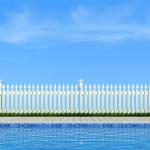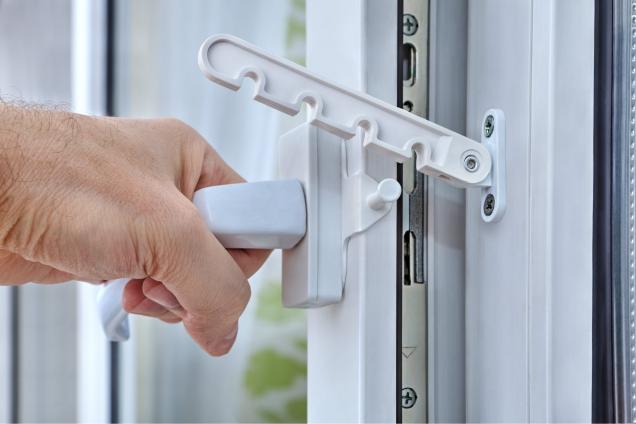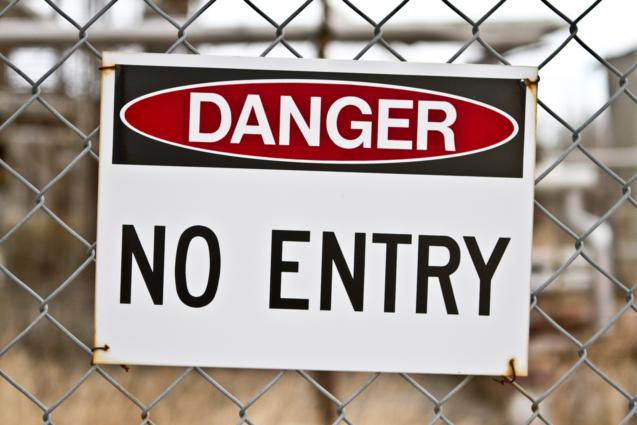
5 Important Things to Know About Pool Fencing
Are you thinking of installing a new pool? Research by the Australian Bureau of Statistics shows you’ll be among the 11% of Aussies who have their own aqua haven in the backyard!
But it’s also important to remember that, according to the Royal Life Saving Drowning Report 2017, 44 people drowned in swimming pools around Australia in the year 2016/17.
Whether it’s an inflatable or permanent pool, one of the most important factors is making sure your pool fencing is up to scratch – it’s a law in every Australian state and territory that all swimming pools must be fenced correctly.
Looking for more information about pool fencing? Read on to find out more.
1. The days of a blow-up pool out in the open are over
All pools with 30cm of water or deeper require a fence – this includes inflatable pools for kids and any temporary pools. If it has more than 30cm of water in it, you need a fence!
If you’re thinking of blowing up an inflatable pool for some backyard water fun, it is worth investing in temporary fencing for peace of mind.
2. You’ll probably need a fence earlier than you think
Are you taking the plunge and installing a permanent in-ground backyard pool? You’ll likely need to install temporary fencing while it’s being built!
It’s a common misconception that the fence only needs to go up once the pool is finished – but remember that rainwater can accumulate in the bottom of a pool that’s still under construction.
If anyone is living at the premises during the construction phase, a temporary fence will be needed.
Even if the house is unoccupied, a temporary fence will still need to be installed if the pool is in-ground and not self-draining.
The type of temporary fencing is also important – standard temporary fencing, construction fencing and crowd control barriers do not comply when it comes to building a pool, but there are a variety of temporary pool fence providers out there to choose from.
3. There are pool fencing guidelines that need to be met
Once construction on your pool is finished, it’s time to install a permanent pool fence. Your pool fence must meet the relevant Australian Standard AS1926.1, which requires that your fence:
4. The Australian Standard doesn’t mean you can’t have a beautiful fence
As long as your fence meets the Australian Standard AS1926.1, the appearance and style of your fence are completely up to you.
Some popular fence types include:
5. Is it a good idea to DIY your pool fence?
While it’s legal to install your own pool fence, you do need to adhere to the regulations within your state or territory.
When it comes to pool fencing, it can be tricky to get all of the requirements right – this includes gap sizes, pool and fence distances, gate balance and latches.
Unless you know your way around fencing and tools, it’s best to get a professional to do the job.
Doing so will also save future heartache – imagine finding out your pool was only a few millimetres away from meeting the standard!
Where can I find out about pool safety laws?
Each state and territory in Australia has small variations in their pool fencing regulations – you can view each state and territory’s guidelines by following the relevant link below:
But it’s also important to remember that, according to the Royal Life Saving Drowning Report 2017, 44 people drowned in swimming pools around Australia in the year 2016/17.
Whether it’s an inflatable or permanent pool, one of the most important factors is making sure your pool fencing is up to scratch – it’s a law in every Australian state and territory that all swimming pools must be fenced correctly.
Looking for more information about pool fencing? Read on to find out more.
1. The days of a blow-up pool out in the open are over
All pools with 30cm of water or deeper require a fence – this includes inflatable pools for kids and any temporary pools. If it has more than 30cm of water in it, you need a fence!
If you’re thinking of blowing up an inflatable pool for some backyard water fun, it is worth investing in temporary fencing for peace of mind.
2. You’ll probably need a fence earlier than you think
Are you taking the plunge and installing a permanent in-ground backyard pool? You’ll likely need to install temporary fencing while it’s being built!
It’s a common misconception that the fence only needs to go up once the pool is finished – but remember that rainwater can accumulate in the bottom of a pool that’s still under construction.
If anyone is living at the premises during the construction phase, a temporary fence will be needed.
Even if the house is unoccupied, a temporary fence will still need to be installed if the pool is in-ground and not self-draining.
The type of temporary fencing is also important – standard temporary fencing, construction fencing and crowd control barriers do not comply when it comes to building a pool, but there are a variety of temporary pool fence providers out there to choose from.
3. There are pool fencing guidelines that need to be met
Once construction on your pool is finished, it’s time to install a permanent pool fence. Your pool fence must meet the relevant Australian Standard AS1926.1, which requires that your fence:
- Will not have anything on it that can allow climbing
- Is at least 1.2m high, with a clearance of no more than 100mm from the ground
- Is strong enough that it cannot be forced open by a child
- Is made of materials that can withstand strong force
- Will have no gaps wide enough for a toddler to fit through.
4. The Australian Standard doesn’t mean you can’t have a beautiful fence
As long as your fence meets the Australian Standard AS1926.1, the appearance and style of your fence are completely up to you.
Some popular fence types include:
- Tubular: A classic fence that has long been popular in Australian homes. These fences are usually made of aluminium but can also be pre-galvanised steel or wrought iron. It’s a highly visible and practical design, though it is not as modern as others.
- Timber: A cost-effective option for a pool fence that can be stained with a variety of colours to suit your home.
- Glass: A popular option that offers an unobstructed view of your pool; however, it is more expensive and requires frequent cleaning.
5. Is it a good idea to DIY your pool fence?
While it’s legal to install your own pool fence, you do need to adhere to the regulations within your state or territory.
When it comes to pool fencing, it can be tricky to get all of the requirements right – this includes gap sizes, pool and fence distances, gate balance and latches.
Unless you know your way around fencing and tools, it’s best to get a professional to do the job.
Doing so will also save future heartache – imagine finding out your pool was only a few millimetres away from meeting the standard!
Where can I find out about pool safety laws?
Each state and territory in Australia has small variations in their pool fencing regulations – you can view each state and territory’s guidelines by following the relevant link below:



